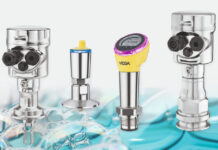THE high accuracy Becker Varis Smartsense® gas monitoring system enhances safety in diverse sectors. Adherence to Intrinsically Safe (IS) certification means this system can be safely deployed in hazardous and potentially explosive areas.
Environments which require dependable atmospheric and environmental monitoring, include general industry and manufacturing facilities, petrochemical, oil and gas plants and the mines.
“Becker’s high accuracy Smartsense system – with integrated features for the detection of ambient temperature, humidity and barometric pressure – forms an essential part of critical communications and safety systems in the workplace,” says Andrew Trentelman, senior general manager: Electronics, Becker Mining South Africa. “Some factories make use of manufacturing methods that can produce high levels of poisonous gases, or even explosive gases. In these environments, it is important to monitor gases emitted into the atmosphere real time and have a reliable system to take immediate automatic action to eliminate the possibility of poisonous environments, as well as explosions.
“Apart from the accurate detection and monitoring of ambient temperature, humidity and barometric pressure, every device can monitor up to four gases, including Oxygen (O2), Methane (CH4), Carbon Dioxide (CO2), Carbon Monoxide (CO), Hydrogen Sulphide (H2S), Chlorine (CI2), Hydrogen (H2) and Nitrogen Dioxide (NO2).
“The Smartsense unit can be fitted with different gas monitoring heads to suit specific environmental monitoring needs.”
An important advantage of the Smartsense SSFM-100 device over conventional monitoring systems, is all features are integrated into one compact device. There is no need for complex cable connections, troublesome programming or difficult calibration.
Additional analog/digital input ports provide compatibility with other devices, to accommodate a plant’s expansion requirements. For example, an additional sensor connectivity could be for air-flow.
Smartsense SSFM-100 gas monitors/controllers allow for localised use, or for implementation into a system-wide installation using industry standard communication protocols, such as Modbus RTU and OPC connectivity or for integration into legacy systems using 4-20 mA.















